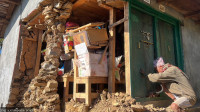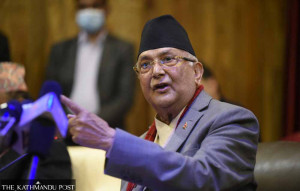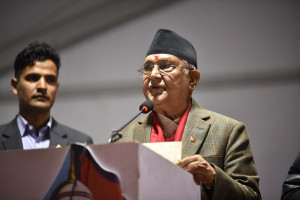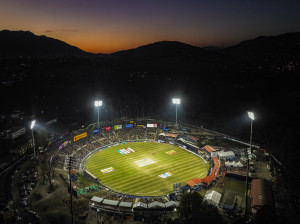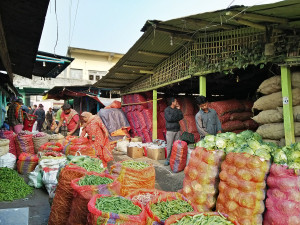Editorial
Bhutan’s gamble with GMC
The vision of a new global city in India’s doorsteps is both risky and exciting.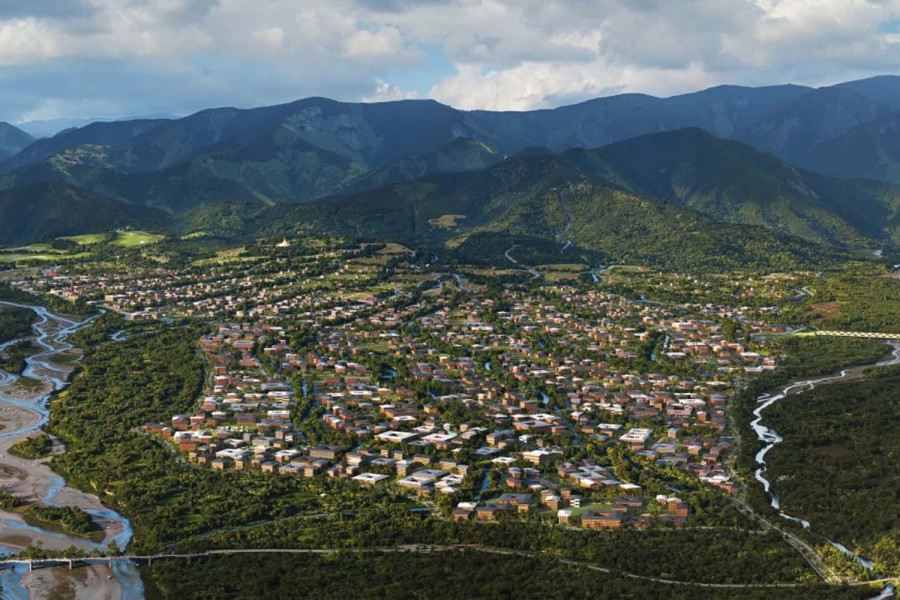
Biswas Baral
A wise old man of Bhutan, with a wealth of experience in Druk government and bureaucracy, was in his element as he supped up suja, the local butter tea that is the perfect antidote to cold Thimphu evenings.
“Nepal is a big country, you can afford to play off India and China. For us, close alignment with New Delhi is the only option. So, yes, we are relying on India for the success of the Gelephu Mindfulness City,” he explained in his pitch-perfect English.
Whatever Thimpu’s alignment, it is hard to see how the dream Bhutanese project will escape the diktat of regional geopolitics.
The city, says its official website, will be a Special Administrative Region, “an innovative urban development project that integrates economic growth with mindfulness, holistic living, and sustainability.”
Spread over 2,500 square kilometres—nearly three times the area of Singapore—the GMC is being built in south-central Bhutan next to the Indian state of Assam.
The planners reckon they have found the perfect place.
“GMC’s strategic position at the crossroads of major economic regions, including South Asia, ASEAN, and China,” combined with Bhutan’s commitment to sustainable development, rich cultural heritage, and strong governance, says the website, “positions the city as a global leader in mindful and sustainable urban growth.”
Bhutanese people see the $100bn enterprise as a gift of their visionary monarch—who is head and shoulders above “our thieving and self-serving politicians,” as one taxi driver in the Bhutanese capital put it.
By capturing the youth imagination, the city is expected to help Bhutan be a first-world state. Right now, Bhutanese youths want to go abroad, mostly to Australia for study and work. For instance, in just one recent fiscal year, around 13,270 (1.7 percent of Bhutan’s population) migrated to Australia.
In his December 17, 2023 National Day address announcing the GMC, 43-year-old King Jigme Khesar Namgyel Wangchuck addressed the migrating Bhutanese youth. “To our fellow Bhutanese living abroad, know that you are always in my thoughts,” he said. “You are part of the reason why we conceived this Gelephu project.”
When I first heard of the GMC, I don’t know why but the “ghost cities” that were sprouting all over China in the 2000’s immediately came to my mind. The most notable of them was Ordos in Inner Mongolia, labelled by Daily Mail in 2016 as ‘China’s biggest ghost city’.
Ordos, another planned epitome of sustainable living, spreads over 355 square kilometres, covering an area larger than Las Vegas. “The fact that just 100,000 residents inhabit a city intended to house a million gives the settlement a post-apocalyptic feel, with creepy deserted streets,” the paper reported.
The Bhutanese government also wants to settle over a million people in the GMC. People stayed away from Ordos because of its high property prices and its rather harsh, desert-like environment. Are there similar obstacles in Gelephu?
The land prices in areas that will be the GMC are already “shooting through the roof,” as a Bhutanese journalist who owns a piece of land in Gelephu said. High real estate prices are just one concern.
Even if investors and visionaries are willing to come, will India allow hundreds of thousands of foreigners to settle in a space of such high strategic value? Or is the idea that this centre of global excellence will be mostly inhabited by Indian techies and new-agers?
Bhutan is already deeply tied to New Delhi—coordinating with it foreign and defence policies and pegging its currency at par (1:1) with the Indian rupee. Balancing Beijing and New Delhi is thus hardly an option.
The only land route to the city is through India. Moreover, any international airline landing at the new airport in Gelephu will have to descend through Indian airspace. If the experience of Nepal is any guide, India will bargain hard to give Bhutan these additional air routes.
The example of Singapore, often invoked in the case of the GMC, is not much of a help. The South East Asian country is at an intersection of vital international maritime trade routes while Gelephu is part of a landlocked country in a geopolitically tricky spot.
Bhutan plans to finance the GMC by selling more electricity to India and through long-term bonds.
When I queried GMC authorities on whether Chinese investments would be permitted, they replied in the affirmative. But India does not even allow Bhutan to have diplomatic ties with China. With New Delhi determined to maintain a grip in its near neighbourhood, bringing sizable Chinese (or Western) investment in the GMC won’t be easy.
India and China have repeatedly tussled over the unsettled bit of territory they share with Bhutan, most recently in 2017. Given Bhutan’s experiences with Doklam, how might India and China’s strategic interests shape the GMC? Or, as in the case of Lipulekh, will India and China decide to settle the issue between themselves without the participation of the third country in question? Either way, Bhutan loses its agency.
I have discussed some of my geopolitical concerns over the GMC. There are also questions over its financial viability. Yet I wish the Bhutanese people and their monarch success. If the idea comes through, it would be great news for the rest of South Asia.
This is because the development of GMC as a successful international tech and commercial hub will mean the Indian babus and their political masters, in agreeing to concede the agency of a small and dependent neighbour country, would have begun to overcome their colonial hangover.
Perhaps the India of tomorrow will not just be richer and more powerful but also more confident. This confidence in turn could translate into a new modus vivendi in South Asia with China, particularly if the two countries’ tensions with the West continue to escalate.
So, yes, I am sceptical. But I would be happy to be proven wrong. And if Bhutan as a small state has found a new mantra to wade through regional geopolitics, perhaps there could be a useful lesson for Nepal too.
To give the Bhutanese planners another benefit of doubt, even China’s Ordos—once written off as a ghost city—is starting to stir to life, as the idea of building a sustainable, green oasis in the desert is finally coming true. Compared to the speculative bubble that created Ordos, Gelephu is a planning marvel.
Fingers crossed for the GMC then.




 7.12°C Kathmandu
7.12°C Kathmandu





